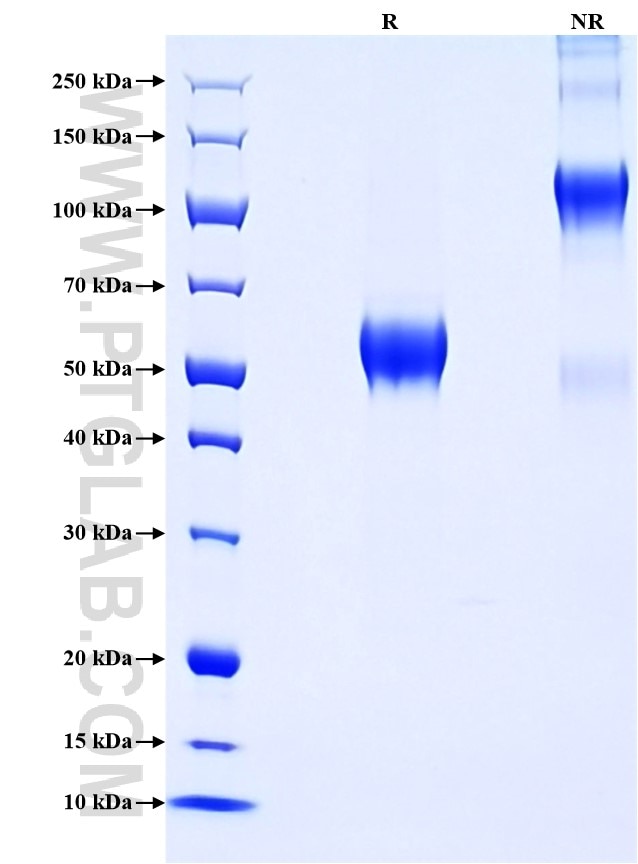Recombinant Mouse TNFRSF9/CD137 protein (rFc Tag)
Species
Mouse
Purity
>90 %, SDS-PAGE
Tag
rFc Tag
Activity
not tested
Cat no : Eg1627
Validation Data Gallery
Product Information
| Purity | >90 %, SDS-PAGE |
| Endotoxin | <0.1 EU/μg protein, LAL method |
| Activity |
Not tested |
| Expression | HEK293-derived Mouse TNFRSF9 protein Val24-Leu187 (Accession# P20334) with a rabbit IgG Fc tag at the C-terminus. |
| GeneID | 21942 |
| Accession | P20334 |
| PredictedSize | 43.8 kDa |
| SDS-PAGE | 48-60 kDa, reducing (R) conditions |
| Formulation | Lyophilized from 0.22 μm filtered solution in PBS, pH 7.4. Normally 5% trehalose and 5% mannitol are added as protectants before lyophilization. |
| Reconstitution | Briefly centrifuge the tube before opening. Reconstitute at 0.1-0.5 mg/mL in sterile water. |
| Storage Conditions |
It is recommended that the protein be aliquoted for optimal storage. Avoid repeated freeze-thaw cycles.
|
| Shipping | The product is shipped at ambient temperature. Upon receipt, store it immediately at the recommended temperature. |
Background
CD137, also known as TNFRSF9 or 4-1BB, is an inducible T cell surface receptor which belongs to the tumor necrosis factor receptor superfamily. CD137 is a transmembrane protein expressed on the surface of activated T-cells. In addition, activation-dependent expression of CD137 has also been found in B lymphocytes, monocytes, and diverse nonlymphoid cell types. CD137 provides a co-stimulatory signal that enhances the survival, and differentiation of cells, and has a crucial role in the development of CD8 cytotoxic T cells and anti-tumor immunity. Soluble forms of CD137 (sCD137) are generated by differential splicing and are released by activated lymphocytes. Elevated serum sCD137 level has been associated with some diseases, including rheumatoid arthritis, multiple sclerosis, chronic lymphocytic leukemia, and acute coronary syndrome.
References:
1. Vinay DS. et al. (1998) Semin Immunol. 10(6):481-9. 2. Schwarz H. et al. (1995) Blood. 85(4):1043-52. 3. Nakaima Y. et al. (2013) PLoS One. 8(5):e64425. 4. Michel J. et al. (1998) Eur J Immunol. 28(1):290-5. 5. Sharief MK. et al. (2002) Eur J Neurol. 9(1):49-54. 6. Furtner M. et al. (2005) Leukemia. 19(5):883-5. 7. Yan J. et al. (2013) Clinics (Sao Paulo). 68(2):193-8.

